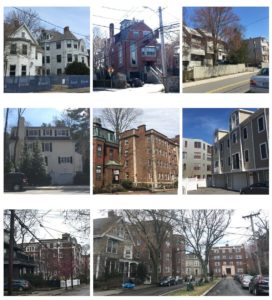Last month, the city council in Cambridge, Massachusetts, voted to smooth the path for more affordable housing to be built in the city, from which people on low and average incomes are increasingly being squeezed out. The news follows a campaign of more than a year in which students from Harvard’s Graduate School of Design advocated in favor of the “affordable housing overlay.”
Patrick Braga (MUP ’20), who was awarded the 2020 Ferdinand Colloredo-Mansfeld Prize for Superior Achievement in Real Estate Studies in part for his work on the campaign alongside the nonprofit group A Better Cambridge, says that students had a vital role to play because they are intrinsically tied into the local housing economy. “There will always be students in Cambridge and many of them are taking up apartments that could be going to local people,” says Braga. “If we can get affordable housing built that’s directly geared toward local people, there will be a little less competition at that tier of the housing market.”

The overlay was passed into law by seven of the nine city council members. It means that new developments or conversions in which all units are reserved for households earning below the local median income—at no more than 30% of their earnings—will be automatically allowed, without the need for additional permits.

As a result, affordable-housing developers will be better placed to compete with private real-estate companies. Previously, the high cost of land and construction and complex rules about the nature of new architecture made it difficult to build anything that would not make a profit. Developers of affordable homes may now find it easier to secure public funding for their proposals, since the release of subsidies often requires them to prove they meet, or have approval to deviate from, zoning requirements. “For developers of affordable housing, having this kind of predictability streamlines the construction process tremendously,” Braga says.
In 2019, 14.8 percent of Cambridge’s housing stock was estimated to be affordable. The hope is that the overlay will allow this number to increase to 16 percent by 2030—a vital increase in a majority renter city. Getting the law passed wasn’t straightforward, Braga says, who worked alongside other GSD students including Thandi Nyambose (MUP ’21), Henna Mahmood (MUP ’21), and Suryani Dewa Ayu (AB ’15 MUP ’20) on the effort. There were concerns from residents that giving the green light to any development that met the basic zoning requirements would mean a flurry of new buildings that clashed with what they saw as the original character of the city—defined by the elegant four- to six-story buildings that were permitted under the height constraints of the 1920s.
“By the 1950s, Cambridge actually had no height limit to its buildings, and there was a lot of a backlash against the architectural changes and the large buildings that suddenly felt out of place with the more human-scale neighborhoods that residents were used to,” Braga explains. “And in the 1970s and 1980s there was increasing recognition of the importance of giving residents of cities and neighborhoods a voice in what future development should look like.”
I think a strength of the GSD is that it made clear to me how important illustrations and visuals are for a policy proposal like this.
Since then, development in Cambridge has required a lot of negotiation to deviate from zoning codes. “It could take upwards of a year, which meant affordable-housing developers were facing a tremendously high barrier of entry,” Braga says. “Meanwhile, the economy of the Greater Boston region has been booming and jobs are being added faster than housing units, leading to long-time residents and people like firefighters and teachers having increasing difficulty finding homes.”
Last summer, residents and city officials debated the new policy in a meeting that lasted five hours. Passing it meant persuading city council members and reluctant residents, particularly longtime homeowners, that the new rules would not disrupt their neighborhoods. “A lot of people were founding their fears on the notions that there would be high-rises everywhere and old buildings would be demolished, and that their sense of stability would be upturned,” Braga says. “I think a strength of the GSD is that it made clear to me how important illustrations and visuals are for a policy proposal like this.”
As part of the process, the city commissioned a local urban designer to make 3D models to demonstrate that the scale of new buildings would match what already existed. And Braga proposed a rule for how to calculate minimum front setbacks for buildings—by referring to the existing structures on either side—an idea that was eventually incorporated into the final ordinance.
Both a recent graduate and a Cambridge native, advocate Dewa Ayu brings a unique perspective: “As someone who was raised in Cambridge—a proud daughter of street vendors and small business owners—I am excited to see how this can lead to centering the most marginalized voices in our city,” she says.

